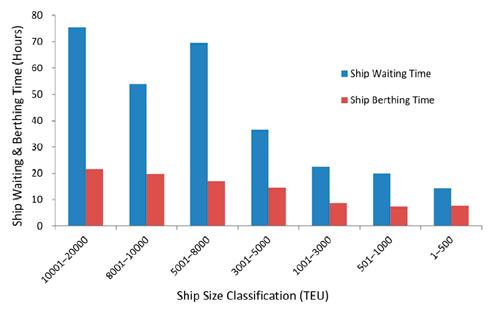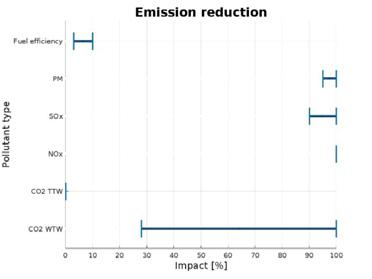Green Deal Validatieregeling Validation programme
Cold ironing
Description
Cold ironing is a technique which allows ships to reduce CO2 and local emissions by providing a clean alternative while berthed in a port. Essentially, the ship’s electric power system is connected to an on-shore power source, which enables it to supply the auxiliary system on the ship. Without this system, the diesel generators have to keep on running to supply the auxiliary system, leading to the corresponding emission.

While harbored in the port, cold ironing potentially negates emitting any exhaust emission, depending on the method in which the electricity was generated. In addition, it is highly compatible with any hybrid or electric propulsion system, as this system is able to charge the on-board generators or batteries. The required power per vessel can range from 20 kW for a small ship to 10 MW for a big cruise vessel. The standard power supply for cold ironing are generally not suitable to charge large batteries for hybrid propulsion. Those battery can range from 1-4 MWh and would require 300 kW charge power or more.
Market readiness & availability
Cold ironing is a mature (TRL 9), stand-alone technology and no known alternatives to cold ironing are currently on the market. To be able to use cold ironing while berthed, an on-shore installation should be in place. This consists of a sub-station which is connected to the (local) electricity grid and a crane (or cable management system) to guide the cable in order to connect to the ship in order to avoid handling of high voltages. Presently, not all load requirements can be handled at ports though.
Cold ironing suppliers on the ship side are widely available on both the Dutch and international maritime market. On the shore-side, a lot of effort is taken by (European) harbors in order to become compatible with all ship types, although the wide variation in load requirements has proven to be a demanding challenging.
Applicability on reference ships
Cold ironing is a relatively simple technique which uses a well-designed methodology which is applicable to all ship types and variants.
Adding the possibility to use cold ironing requires scarcely any adaptations in terms of the design of the ship. These adaptations include a transformer and a plug to connect to the auxiliary system. The on-shore power is then fed to the ship’s transformer to convert it to the required level onboard the vessel.
General cargo Tug boat Offshore supply Crew tender catamaran Dredger vessel Super yacht + + + + + +Emission reduction effectiveness
The installation of a cold ironing system does currently not reduce the emissions at open water. The impact of cold ironing is therefore proportional to the time the ship is berthed in the port. Also, ships in the queue waiting to be docked cannot be connected to a cold ironing system. The average waiting time and berthing time for container ships have been determined to be 41.6 and 13.8 hours respectively, though these vary heavily based upon the ship size.

Currently, implementing a cold ironing system on a ship can lead to fuel consumption- and GHG reduction up to 10%, of course depending on sailing profiles and time spend harbored. While berthed and connected to a cold ironing system, no GHG are emitted. Yet, it should be noted that cold ironing is only a zero-emission technology if the used electricity was generated by a renewable energy source. Electricity produced from the EU mix 2030 is projected to cut GHG emissions by about 28%.
Cold ironing is able to reduce both GHG and pollutant emissions. When berthed and in use, no harmful emissions are emitted. Overall, adding a cold ironing system is projected to reduce pollutant emissions by 3-10% when also taking the operational emissions into account.
 Average ship waiting time and berthing time based on the ship size.
Average ship waiting time and berthing time based on the ship size.
Operation of the cold ironing system on board is not too complex. Nevertheless, to minimize safety hazards, basic technical knowledge and training on the sequence of operation should be required for all operators of the crew. In addition, preassigned contact lists for electrical emergencies on shore or the ship must be clearly defined and procedures to deal with such a situation should be known upfront to avoid delay in case of emergency. Moreover, high voltage systems are prone to producing arc-flashes, for which additional enhancing safety training is highly recommended.
The roll-out of regulations has been slow, hence, additional frameworks are expected to be developed, implemented and standardized over the upcoming year. These may include standardization regarding the location of the on-shore power system, the location of the connection point, a common graphical user interface (GUI), further risk evaluation regarding the handling of hazardous cargo while the cold ironing system is in use or additional clarification and specification of existing legislation based on the size of the ship.
Costs
Indicative values are:
• Investment costs:
- Indicative values ranging from € 300,000 to € 550,000 for power supplies ranging from 600 KW to 10,000 KW (on basis of retrofitting).
• Operation & maintenance costs: In the Netherlands a rate of € 0.27 per KWh is common.
From the terminal perspective, the investment in the cold ironing system in Aberdeen costed about 7,4 million euro, whereas annual operation and maintenance costs are estimated at 0,37 million.
Development prospect
Cold ironing is expected to increase progressively in usage over the upcoming years. The infrastructure of cold ironing at many ports is expanding and starting in 2030, all ships with a gross tonnage above 5,000 are required to use cold ironing while berthed in an European port. This obligation is due to the FuelEU Maritime regulation initiated by the European Union. This European view is also supported by the national government (of The Netherlands) which reduced the taxes associated with cold ironing installations.
Looking beyond the 2030 deadline, the impact of cold ironing to reduce all emissions can increase substantially if the waiting times for ships are handled more efficiently. Another option is to supply electrical power while at anchor waiting; developments towards floating charing bubs are ongoing.
